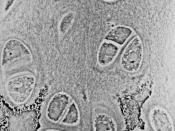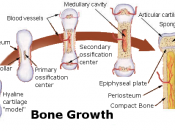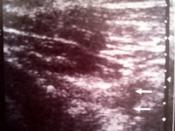Degenerative joint disease and limb deformities cause lameness in adolescent pigs. Dyschondroplasias (osteochondroses) typified by failure of endochondral ossification are important predisposing factors for physeal and joint lesions. The youngest age when lesions develop, the primary cartilage defect, pathogenesis of lesions, and causes are not established. The purpose of the present study was to determine the age of onset and pathogensis of dyschondroplasias in pigs.
Ninety-two pigs between 1 and 169 days of age were killed and dissected for angiomicrographic, radiologic, histologic, and histochemical investigation. Physeal and articular epiphyseal (A-E) complexes were collected from ribs, ischial tuberosities, and extremities of long bones. Microscopic examination of tissue sections stained with hematoxylin and eosin was the definitive technique for detection of lesions. Histochemistry included the demonstration of cartilage proteoglycans, mineral radicals, and collagen.
Lesions were in 12 of 21 pigs at 1 day of age, and consisted of foci of persistent hypertrophied chondrocytes and matrix in physes or A-E complexes.
In angiomicrographs vessels frequently crossed normal physes and in abnormal physes vasculature was normal in the vicinity of lesions. Chondrocytes in sections of normal growth cartilages prepared for histochemistry were of 2 or more types. Heterogeneity among chondrocytes and matrices in the simplest lesions was similar to that in normal physes and A-E complexes. Some lesions contained mineralized matrix. However, areas of chondrolysis which contained little, if any, proteoglycan or mineral were more typical of a second type of dyschondroplasia in A-E complexes of pigs older than 80 days. A secondary center of ossification was in ischial tuberosites of some pigs by 26 days of age.
Simple lesions existed at 1 day; most probably they were congenital. Since the prevalence of lesions was relatively high in pigs up to 6 months, dyschondroplasias may be part of the...



Zoology.
The essay was very informative and interesting but I believe that it could be more detail so the reader could understand what the contents are.
0 out of 0 people found this comment useful.